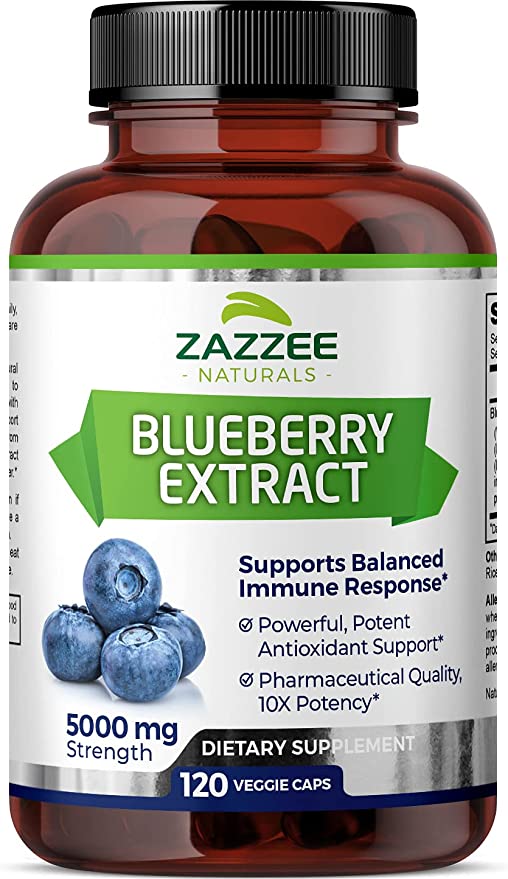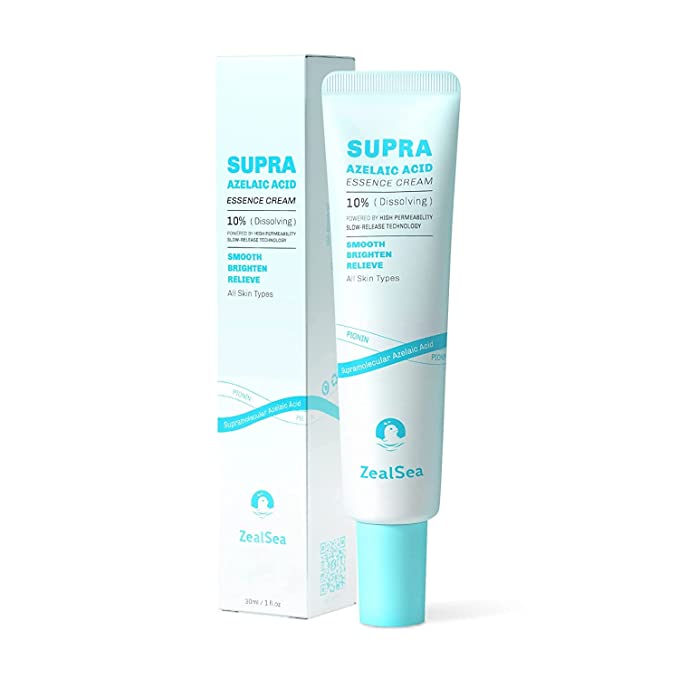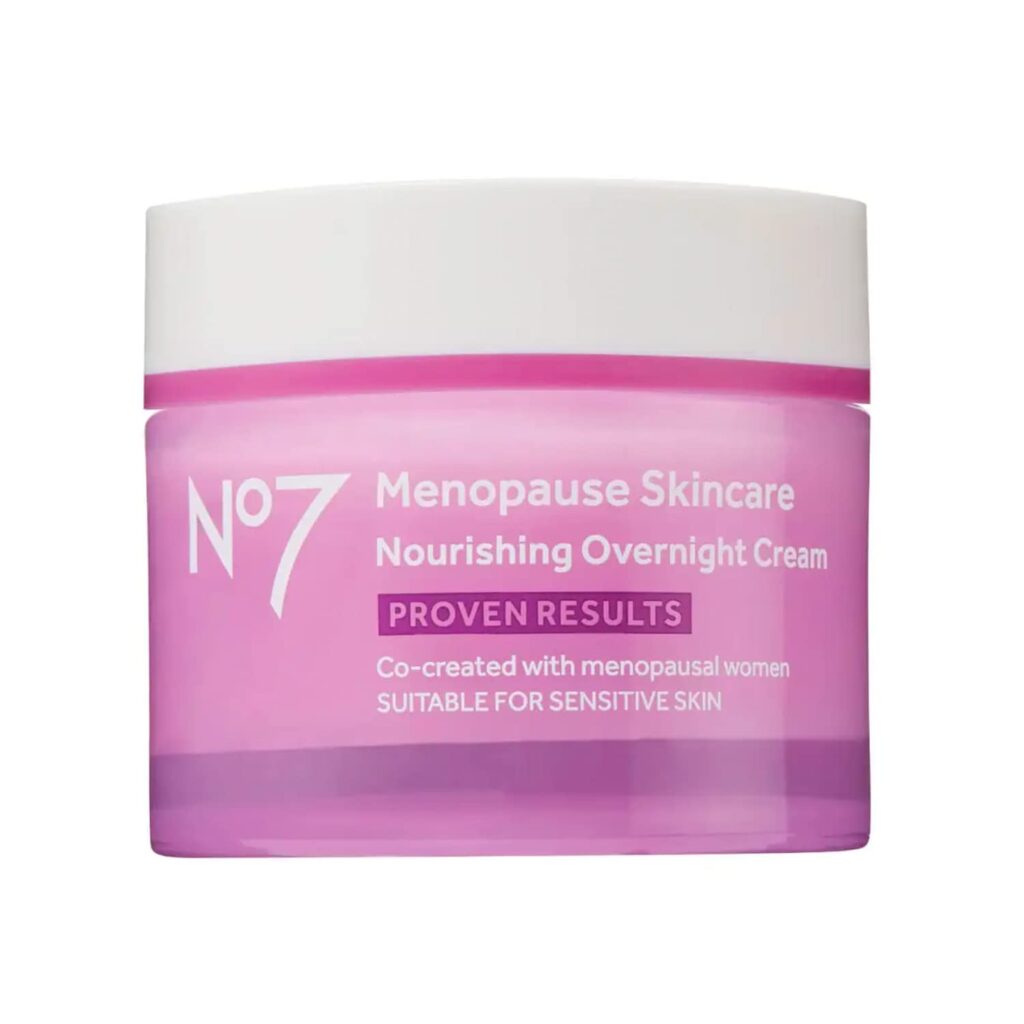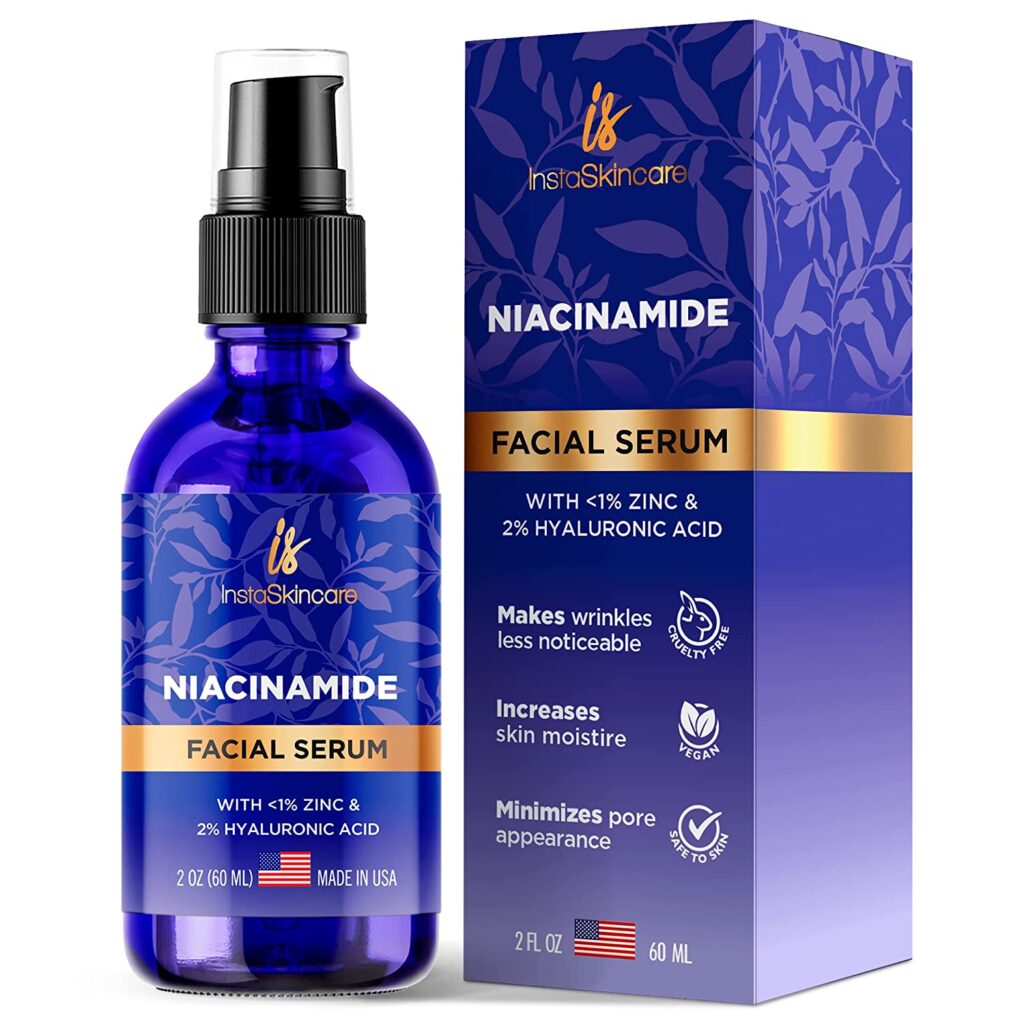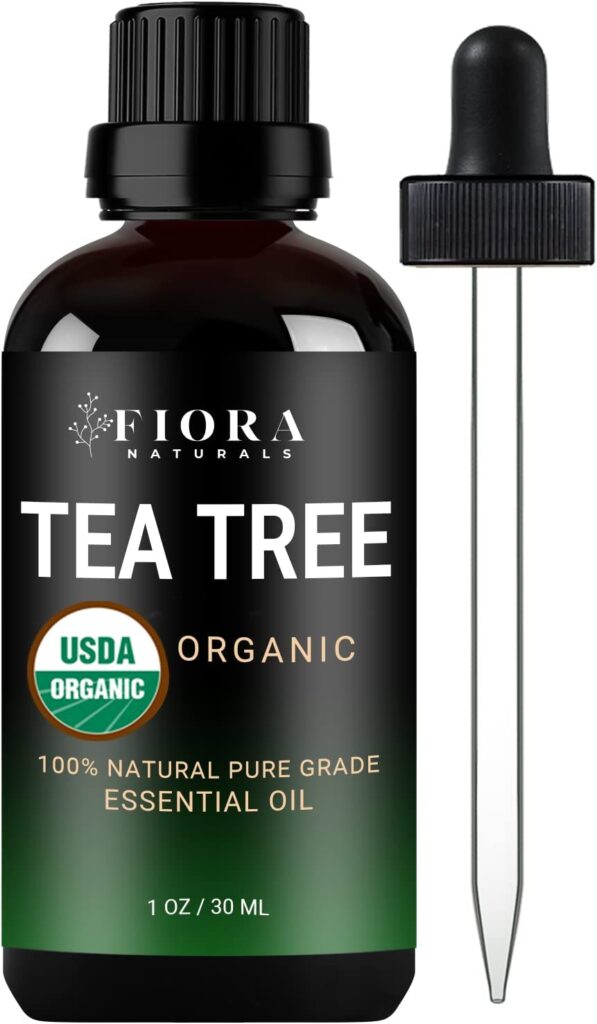Healthy skin is something that everyone strives for, but it can be difficult to achieve and maintain. Many factors, such as environmental pollutants, stress, and poor diet, can contribute to skin problems like dryness, wrinkles, and acne. However, incorporating blueberries into your diet can help combat these issues. Blueberries are a superfood full of antioxidants, vitamins, and minerals that can help improve skin health. Read on to discover the benefits of blueberries for skin health and how they can help you achieve glowing, supple skin. Read More
Acne and Rosacea: Critical Differences and Effective Treatments
Acne and rosacea are common skin concerns that may look similar but are different. Knowing the differences between them can help you get the right treatment. Let’s take a closer look at their distinct features and effective remedies. Read More
Acne: What is it?
Acne is a skin condition that causes pimples, blackheads, and whiteheads. It occurs when the hair follicles become clogged with oil and dead skin cells. Acne commonly appears on the face, back, and chest.
Rosacea: What is it?
Rosacea is a chronic skin condition that causes facial redness, bumps, and visible blood vessels. It may also result in a burning or stinging sensation. Rosacea often occurs in the middle of the face and tends to affect people with fair skin.
The Differences:
Acne and rosacea differ in many aspects, including the following:
– Causes: Acne is caused by clogged pores, while the exact cause of rosacea is unknown.
– Symptoms: Acne causes pimples, blackheads, and whiteheads, while rosacea causes redness, bumps, and visible blood vessels.
– Age of onset: Acne often starts in teenage years, while rosacea typically appears in adults over30.
– Location: Acne can occur anywhere on the body, while rosacea is mostly on the face.
– Triggers: Acne can be triggered by hormonal changes, stress, and certain foods, while triggers for rosacea include sun exposure, hot drinks, and spicy foods.
Effective Treatments:
Acne and rosacea can be managed with suitable treatments. Here are some effective remedies:
For Acne:
– Topical creams containing benzoyl peroxide, salicylic acid, or retinoids can unclog pores and reduce inflammation.
– Oral medications such as antibiotics or birth control pills may help regulate hormonal changes that cause acne.
For Rosacea:
– Topical creams containing azelaic acid, metronidazole, or brimonidine can alleviate redness and bumps.
– Laser therapy or intense pulsed light (IPL) treatment may help reduce visible blood vessels and improve skin tone.
Final Thoughts:
Acne and rosacea may seem similar, but they have different causes and symptoms. Understanding their unique features can help you get the right treatment. If you have concerns about your skin, it’s best to consult a dermatologist for professional advice.
Menopausal Skin Is In: Embrace Your Skin’s Journey with Confidence
Menopause is a natural and inevitable process that every woman goes through. It signals the end of a woman’s reproductive years and the beginning of a new chapter in her life. However, this transformative phase brings about physical and emotional changes that can be challenging to navigate. Among these changes, one of the most noticeable is the skin’s appearance and texture. Therefore, understanding and nurturing menopausal skin is essential for maintaining a healthy and radiant complexion. Read More
Section 1: Understanding Menopausal Skin
1.1 The Impact of Hormonal Changes
As women age and enter menopause, hormonal fluctuations occur, particularly with a decrease in estrogen levels. Consequently, these changes affect the skin’s hydration, firmness, and elasticity.
1.2 Acne Breakouts and Hormone Fluctuations
Menopausal skin is susceptible to acne breakouts due to the hormonal fluctuations experienced during this phase. This can be particularly frustrating for women who believed their acne problems were long gone after their teenage years.
Section 2: Nurturing Menopausal Skin
2.1 Hydration is Key
Ensuring optimal hydration is crucial for menopausal skin. By drinking plenty of water throughout the day, you can keep the skin moisturized from the inside out.
2.2 Antioxidant-Rich Diet
Nourishing your skin from within becomes even more important during menopause. Consuming a diet rich in antioxidants, including berries, leafy greens, and nuts, helps to reduce inflammation and fight against premature aging.
Section 3: Tailoring Skincare Routine for Menopausal Skin
3.1 Choosing the Right Skincare Products
Tailoring your skincare routine to address the specific needs of menopausal skin is essential. Opt for products enriched with ingredients like hyaluronic acid, retinoids, and vitamin C, which promote hydration, brightness, and collagen production in mature skin.
3.2 Regular Exfoliation
Incorporating regular exfoliation into your skincare routine is beneficial for menopausal skin. By gently removing dead skin cells, you can promote cell turnover, revealing a brighter and smoother complexion. However, it’s important to avoid over-exfoliation, which can damage the skin and cause irritation.
Section 4: Self-Care for Menopausal Skin
4.1 Stress Management
Managing stress levels is crucial for maintaining healthy and vibrant skin during menopause. Engaging in stress-reducing activities such as yoga, meditation, or spending time in nature can help minimize the effects of stress on the skin.
4.2 Prioritize Sufficient Sleep
Quality sleep plays a significant role in the health of menopausal skin. Aim for 7-8 hours of uninterrupted sleep each night, allowing the skin to repair and regenerate.
Conclusion:
Embrace Your Skin’s Journey with Confidence
While menopausal skin may present new challenges, it’s important to approach this phase with confidence and self-love. Nurturing your skin through proper hydration, an antioxidant-rich diet, a tailored skincare routine, and self-care practices will help you maintain a healthy and radiant complexion. Remember, every wrinkle and line tells a story of a life well-lived, so embrace your aging skin with pride and grace.
Why Niacinamide Is Rising In Popularity: The Powerhouse Ingredient for Healthy Skin
A good skincare routine can make a huge difference in the appearance of your skin. Furthermore, one ingredient that has been gaining popularity lately is niacinamide. In this article, we’ll explore the benefits of incorporating niacinamide into your skincare regimen and provide practical tips for effective usage. Read More
1: Benefits of Niacinamide
Niacinamide, a form of vitamin B3, offers a wide range of benefits for the skin. Firstly, it helps in reducing inflammation and redness. Secondly, it has the ability to minimize pores and improve skin texture and tone. Thirdly, niacinamide boosts hydration, strengthens the skin barrier, and reduces the appearance of fine lines and wrinkles.
2: Real-Life Examples
Many people have experienced positive effects from using niacinamide. For instance, Person A, who struggled with acne, noticed a significant decrease in breakouts and smoother, more even skin after incorporating niacinamide into their routine. Person B, with sensitive skin, found that niacinamide reduced redness, resulting in brighter and more hydrated skin. Lastly, Person C, who was concerned about signs of aging, observed that niacinamide made their fine lines and wrinkles less noticeable, and their skin felt firmer and plumper.
3: Effective Usage
To get the most out of niacinamide, here are some practical tips to keep in mind. First, look for products that contain at least 5% niacinamide. Second, apply niacinamide serum before moisturizer. Third, remember to apply a broad-spectrum sunscreen during the day as niacinamide can increase the skin’s sensitivity to the sun. Lastly, start with a low concentration of niacinamide and gradually increase it as your skin adjusts.
4: Potential Concerns and Precautions
While niacinamide is generally safe for all skin types, there are a few things to keep in mind. Firstly, those with extremely sensitive skin should do a patch test before using products that contain niacinamide. Secondly, if you experience any irritation or redness, it is recommended to discontinue use. Lastly, it’s important to consult with your dermatologist if you are using prescription skincare products as well.
Conclusion:
Incorporating niacinamide into your skincare routine can have a powerful impact on your skin’s appearance and health. With its numerous benefits and easy-to-use formulations, it’s a great ingredient for all skin types to try. So why not give it a go and see how your skin responds?
Natural Remedies for Common Skin Issues: Acne, Dryness, and Sensitivity
Achieving healthy and glowing skin is a common desire. However, various skin issues can hinder our confidence and well-being. Fortunately, nature provides us with effective remedies to address these concerns. In this blog post, we will explore natural solutions for common skin issues, empowering you to take control of your skin health the natural way. Read More
Acne-Busting Power of Nature
Tea Tree Oil: The Mighty Fighter Against Acne
Harness the antibacterial properties of tea tree oil to combat acne-causing bacteria. Dilute and apply directly to affected areas. Furthermore, tea tree oil has been shown to reduce inflammation and redness associated with acne.
Aloe Vera: Soothing and Healing
Soothe and heal acne-prone skin with aloe vera gel, which contains anti-inflammatory compounds. Additionally, aloe vera promotes skin healing and reduces redness. Moreover, aloe vera can help prevent scarring and improve overall skin texture.
Green Tea: Detoxify and Reduce Inflammation
Detoxify and reduce inflammation with green tea’s antioxidant-rich properties. Use it as a toner or apply cooled tea bags to affected areas. Furthermore, green tea can help in reducing excess oil production and soothing irritated skin. Additionally, the polyphenols in green tea have been shown to have a protective effect on the skin against UV damage.
Banishing Dryness and Hydrating the Skin
Coconut Oil: Nature’s Moisturizer
Nourish and hydrate dry skin with the natural moisturizing properties of coconut oil. Additionally, coconut oil locks in moisture and improves the skin’s barrier function. Moreover, coconut oil contains lauric acid, which has antimicrobial properties that can help prevent infections.
Honey: Nature’s Humectant
Lock in moisture with honey’s humectant properties. Use it as a face mask or in combination with other ingredients. Moreover, honey has antimicrobial properties that can help prevent infections and promote wound healing. Additionally, honey’s antioxidants can help repair damaged skin and promote a youthful appearance.
Cucumber: Cooling and Hydrating
Restore moisture and soothe the skin with the cooling and hydrating properties of cucumber slices. Additionally, cucumbers have a high water content that provides hydration to the skin. Furthermore, cucumbers have a calming effect on irritated skin and can reduce puffiness and dark circles.
Soothing Irritation and Calming Redness
Oatmeal: Soothe and Relieve Itchy Skin
Soothe and relieve itching with oatmeal’s anti-inflammatory properties. Add it to baths or create a paste for direct application. Furthermore, oatmeal forms a protective barrier on the skin, reducing irritation. Moreover, oatmeal can help balance the skin’s pH and remove dead skin cells, resulting in smoother and healthier-looking skin.
Chamomile: Calming and Anti-Inflammatory
Calms irritated skin and reduces redness with chamomile tea or oil. Use it as a face rinse or apply topically. Additionally, chamomile has soothing properties that can help alleviate skin irritation. Moreover, chamomile can promote relaxation and reduce stress, which can have a positive impact on skin health.
Witch Hazel: Natural Astringent and Anti-Irritant
Minimize inflammation and tighten pores with witch hazel’s natural astringent properties. Apply it with a cotton pad. Moreover, witch hazel can help soothe sensitive skin and reduce redness. Additionally, witch hazel can control excess oil production and prevent clogged pores.
Combatting Dark Spots and Hyperpigmentation
Lemon Juice: Natural Skin Brightener
Lighten dark spots and hyperpigmentation with the natural bleaching properties of lemon juice. Dilute and apply it to affected areas. Additionally, lemon juice contains citric acid, which exfoliates the skin and promotes a more even complexion. Moreover, lemon juice is rich in vitamin C, which can help stimulate collagen production and improve skin texture.
Turmeric: Even Skin Tone
Promote an even skin tone with turmeric’s anti-inflammatory and antioxidant properties. Create a paste and target dark spots. Furthermore, turmeric can help reduce the production of melanin, reducing hyperpigmentation. Additionally, turmeric has been used for centuries in traditional medicine for its skin-brightening effects.
Rosehip Oil: Regenerate and Renew
Encourage skin regeneration and diminish dark spots with rosehip oil’s vitamin C and antioxidant content. Apply a few drops to affected areas. Moreover, rosehip oil can improve skin elasticity and reduce the appearance of scars. Additionally, the fatty acids in rosehip oil can nourish the skin and promote a healthy complexion.
Conclusion
Nature offers a treasure trove of natural remedies for common skin issues. By harnessing the power of tea tree oil, aloe vera, green tea, coconut oil, honey, cucumber, oatmeal, chamomile, witch hazel, lemon juice, turmeric, and rosehip oil, you can address acne, dryness, irritation, and dark spots using gentle and effective natural solutions. Consequently, you can achieve healthier and more radiant skin without relying on harsh chemicals or synthetic ingredients. In conclusion, embracing the healing power of nature can transform your skin health and boost your confidence.

